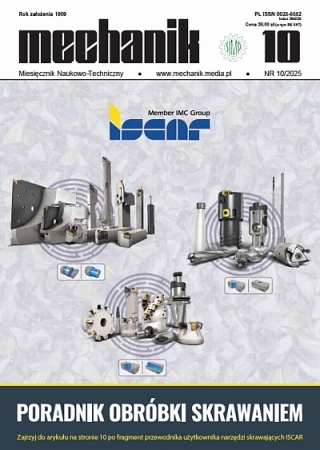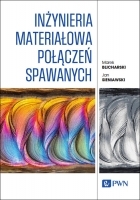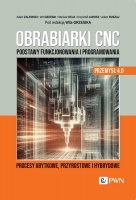Wpływ warunków chłodzenia na chropowatość powierzchni po frezowaniu *
The influence of cooling conditions on surface roughness after milling
Mechanik nr 10/2016 - X Szkoła Obróbki Skrawaniem, XXXIX Naukowa Szkoła Obróbki Ściernej
STRESZCZENIE: W artykule przedstawiono badania porównawcze chropowatości powierzchni po frezowaniu – na sucho, z MQL i emulsją – stali węglowej C45 i stopu aluminium PA4, w zakresie wysokich prędkości skrawania.
SŁOWA KLUCZOWE: chropowatość powierzchni, frezowanie na sucho, minimalne smarowanie, MQL
ABSTRACT: The article presents a comparative study of surface roughness after dry milling, with the MQL and emulsion of C45 carbon steel and aluminum alloy PA4 at high cutting speeds.
KEYWORDS: surface roughness, dry milling, minimal quantity lubrication, MQL
BIBLIOGRAFIA / BIBLIOGRAPHY:
- Brinksmeier E., Walter A., Janssen R. Diersen P. “Aspects of cooling lubrication reduction in machining advanced materials”. P I MECH ENG B-J ENG. Vol. 213, No. 12(1) (1999): pp. 769÷779.
- Klocke F., Eisenblaetter G. “Dry Cutting”. ANNALS CIRP. Vol. 46, No. 2 (1997): pp. 519÷526.
- Korkut I., Donertas M.A. “The influence of feed rate and cutting speed on the cutting forces, surface roughness and tool–chip contact length during face milling”. MATER DESIGN. No. 28 (2007): pp. 308÷312.
- Liao Y.S., Lin H.M. “Mechanism of minimum quantity lubrication in high-speed milling of hardened steel”. INT J MACH TOOL MANU. No. 47 (2007): pp. 1660÷1666.
- Liao Y.S., Lin H.M., Chen Y.C. “Feasibility study of the minimum quantity lubrication in high-speed end milling of NAK80 hardened steel by coated carbide tool”. INT J MACH TOOL MANU. Vol. 47 (2007): pp. 1667÷1676.
- Lopez D.E., Lacalle L.N., Angulo C., Lamikiz A., Sanchez J.A. “Experimental and numerical investigation of the effect of spray cutting fluids in high speed milling”. J MATER PROCESS TECH. Vol. 172 (2006): pp. 11÷15.
- Maruda R., Krolczyk G.M. at al. “A study on droplets sizes, their distribution and heat exchange for minimum quantity cooling lubrication (MQCL)”. INT J MACH TOOL MANU. Vol. 100 (2016): pp. 81÷92.
- Rahman M., Senthil Kumar A., Manzoor-Ul-Salam. “Evaluation of minimal quantities of lubricant in end milling”. INT J OF ADV MANUF TECH. Vol. 18 (2001): pp. 235÷241.
- Senthil Kumar A., Salam M.U. “Experimental evaluation on the effect of minimal quantities of lubricant in milling”. INT J MACH TOOL MANU. Vol. 42 (2002): pp. 539÷547.
- Thepsonthi T., Hamdi M., Mitsui K. “Investigation into minimal-cutting-fluid application in high-speed milling of hardened steel using carbide mills”. INT J MACH TOOL MANU. Vol. 49 (2009): pp. 156÷162.


























